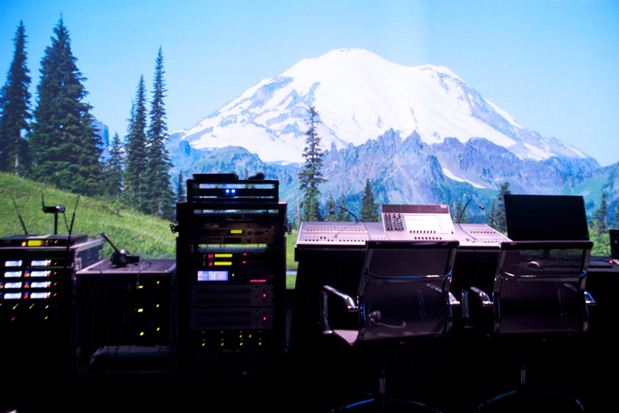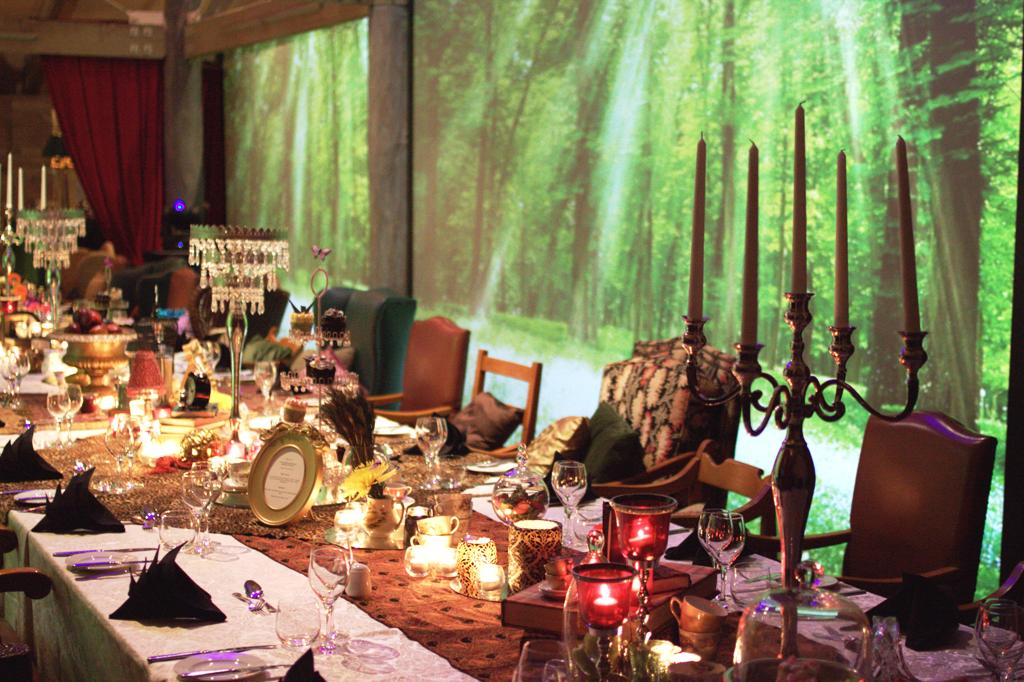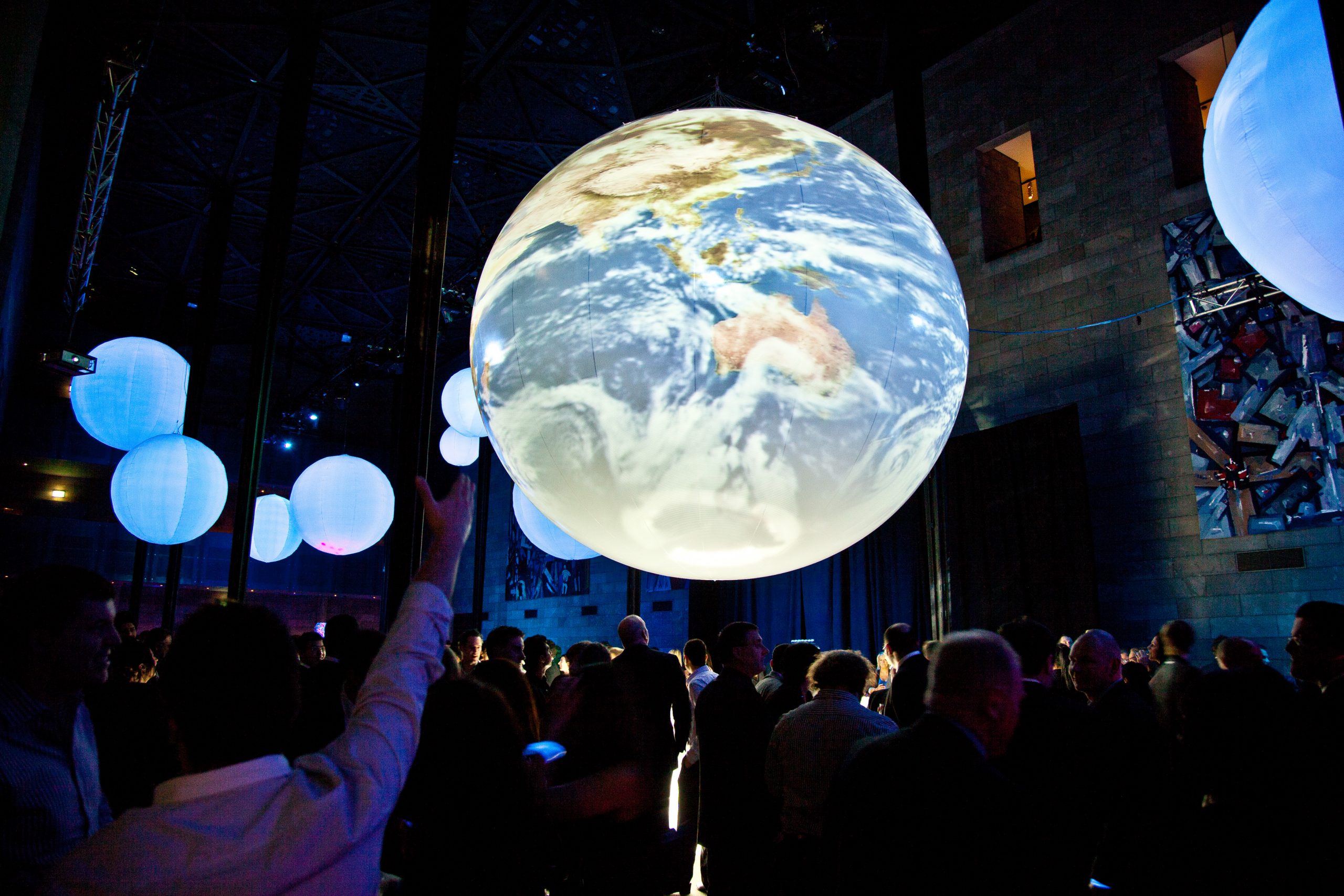We humans have been fascinated with creating art that fools our eyes and transports us physically since the beginning of civilisation. From perspective tricks in murals to the fake windows on blank building walls of the trompe l’oeil tradition, we delight in deceiving our senses. Now, in the 21st century, 2D and 3D projection mapping are the latest tools of this grand tradition, and are available to you to transform your events in ways that are only limited by your imagination.
Mapping it out
So what does the term ‘projection mapping’ mean, and how does it differ from plain old ‘projection’?
Well, we all know what a projection is an image, made of light, beamed onto a screen or surface. It could be a movie, a PowerPoint presentation, or any series of images that gets a point across. Its defining characteristic is that we are clearly aware of its edges, limitations and artificiality. It inhabits a defined space, and our brain sections it off; that’s the projection, and next to it, that’s the wall.

Projection mapping has come to mean the use of two or more projectors to extend a continuous image across multiple surfaces, the classic example being four walls. If you are standing in a square white room and a projector shines a photo of the Swiss Alps onto one entire wall, your brain tells you that you’re looking at a projection of a photo. If multiple projectors work together to cover all four walls with a seamless 360 degree panoramic image of the Swiss Alps, your brain starts to think it’s gone skiing. We’re still not totally convinced, but we are enchanted.
2D or not 2D?
 Whether we’re talking about 2D or 3D projection mapping is dependent on what we’re actually projecting onto. 2D projection mapping assumes that all the surfaces to be covered are flat screens, walls, or floors. The complexity of 2D projection mapping is in lining up the edges of the beams from multiple projectors and coordinating the projected content so that the eye perceives it all as one big, unbroken image. This is known as Edge Blending.
Whether we’re talking about 2D or 3D projection mapping is dependent on what we’re actually projecting onto. 2D projection mapping assumes that all the surfaces to be covered are flat screens, walls, or floors. The complexity of 2D projection mapping is in lining up the edges of the beams from multiple projectors and coordinating the projected content so that the eye perceives it all as one big, unbroken image. This is known as Edge Blending.
This takes some serious calculations and very precise physical controls. There are a variety of technologies on the market that help achieve these results. Some brands of projectors have software built-in that, when a physical link is set-up between units with the same capability, detects and manages the activity of all the projectors in the group, enabling them to work as one.
Another solution is to use specialised computer software and hardware to control your projectors, which enables the use of whichever projection system is available.
3D projection mapping – no glasses required
Event Profile: 3D Projection Mapping from Encore Event Technologies.
3D projection mapping has firmly entered the public consciousness through major public events such as Sydney’s Vivid Festival. The annual event sees the Sydney Opera House, The Museum of Contemporary Art, Customs House and other Sydney landmarks transformed by artists using powerful projectors and complex software. A ballerina dances across the Opera House, Customs House transforms into a 17th century French Palace, and abstract art animates the face of the Gallery.
3D projection mapping is another step up in complexity from 2D. While still drawing on multiple projectors and Edge Blending, it adds the seriously mind-bending task of mapping images onto actual three dimensional objects. In the case of Vivid, it’s a building exterior or architectural feature. Most interestingly, it can also be an object created for the sole purpose of being projected on. It’s this last option that is generating some impressive creative thinking in the events industry.
The textbook example of how to use 3D projection mapping for great effect and value for money in a corporate event has come from the auto industry. At recent international car shows and product launches, manufacturers have made blank white foam shells in the shape of their models. Much cheaper and lighter than an actual car, they are easier to ship to the venue. Amazing content is then projected onto the shell that brings it to life as a car. But this car can change colours, finish and details. The projected content can also be video and animation that make the car look like it is driving at speed. Headlights light up, wheels spin and the windscreen reflects the environment flashing past.
Light: portable, flexible and…..light
There’s some pretty obvious advantages to using projection mapping to theme or brand your event.
The first is ease of creation, transport and setup. Physical sets and props have to be designed, built, transported and made to work physically in the venue. If your theme was Ancient Greece, for example, you’d need to build and install quite a few fake stone columns to give your guests the impression they’re having dinner in The Parthenon. If you project an image, or better yet, video of the actual Parthenon across all four walls, you’ve done a much better job with a lot less hassle.
If you’re running a roadshow that is staged in many different venues, the efficiencies become even greater. Not only have you saved on freight and labour costs, but the logistical challenges presented by different spaces are completely overcome. Venue specific problems such as low ceilings, small doors and bad lift access that can make bringing in sets a nightmare are all sidestepped by using projection mapping.
Your brand, your way
 Despite all of the 3D projection wizardry, the real star of your show is your brand. Projection mapping offers a huge range of opportunities to have your message refreshed and emphasised throughout the event. Because all projected content is dynamic and can be changed subtly or dramatically at will, your branding is no longer relegated to static banners or a single instance on a screen. Your brand can be a brash animated statement on audience entrance, fade to a subtle underpinning during a keynote speech and become part of the room’s architecture in the post-show networking session.
Despite all of the 3D projection wizardry, the real star of your show is your brand. Projection mapping offers a huge range of opportunities to have your message refreshed and emphasised throughout the event. Because all projected content is dynamic and can be changed subtly or dramatically at will, your branding is no longer relegated to static banners or a single instance on a screen. Your brand can be a brash animated statement on audience entrance, fade to a subtle underpinning during a keynote speech and become part of the room’s architecture in the post-show networking session.
The ease of changing projected content also has a positive effect on event timing and management. If a space needs to be reset from lecture to cocktail mode, projected theming and branding doesn’t get in the way like a physical set, one button press and the reset is done.
There’s also the ‘Wow’ factor; your audience leaves the lecture hall which has been subtly branded and lit throughout the conference. They return for dinner and enter a totally immersive fantasy world of your choosing.
Content is Key
The success of any projection mapping project relies on creating the right kind of content. It’s not just the size and quality of the digital images provided as source material, but the way they are used in service of the event’s goal. It takes practical experience in the use of projection mapping at events to know what kinds of content will work and what won’t when scaled across multiple projectors and blown up to the size of a building. Hint: your iPhone photos probably won’t look that good.
The look and feel of an event needs to be sculpted with both artistic vision and technical know-how. Encore Event Technologies now employs specialist staff to help customers build projected content for events in order to achieve the best possible outcomes.
Amazing results can be achieved when technical specialists work hand-in-hand with event organisers to deliver a brief. If your imagination is stimulated by the possibilities of beaming your own world around your audience, start by talking to an expert to determine exactly what they’ll need from you to make it happen.
Imagination is your only limitation
 A blank canvas is a blessing and a curse. Projection mapping enables you to create almost any conceivable visual effect, whether it’s as simple as your logo in three dimensions rotating on a wall, or as complex as your audience being taken on a spaceship through the Milky Way. A coherent artistic vision, well executed, will always have the greatest impact. Consider what the overarching message your audience needs to take away from your event, and focus in on that. All visual material should subtly reinforce that point.
A blank canvas is a blessing and a curse. Projection mapping enables you to create almost any conceivable visual effect, whether it’s as simple as your logo in three dimensions rotating on a wall, or as complex as your audience being taken on a spaceship through the Milky Way. A coherent artistic vision, well executed, will always have the greatest impact. Consider what the overarching message your audience needs to take away from your event, and focus in on that. All visual material should subtly reinforce that point.
As projection mapping is heavily reliant on computer technology, it’s a rapidly changing field. As more becomes technically possible, creative’s are constantly pushing the boundaries of what can be achieved. If you’re looking for inspiration, talk to your Encore Event Technologies contact to see some of our recent work.




Comments